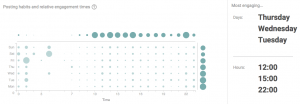The return-to-office debate is settled: Offices are busier than ever
A new “office busyness index” shows growing usage, even on Mondays.
BY Nate Berg
Offices around the country are slowly but steadily seeing workers return. According to a new set of monthly office occupancy data, offices are increasingly busy, with “busyness” up in 28 of the 41 markets being tracked compared to 2023 levels. Some markets, like Manhattan, Washington D.C., and San Francisco, are seeing double-digit increases in activity compared to this time last year.
These figures run counter to the fears many had during and after the pandemic that empty office buildings would never refill. While office leasing is down compared to pre-pandemic times, the offices that are occupied are being used more and more.
This is all according to the new Office Busyness Index, a monthly snapshot of office use in 41 markets from the real estate broker and services company Avison Young. Using real-time occupancy data from the location analytics company Placer.ai, the index tracks office occupancy across roughly 4,000 properties, and compares it to office use in 2023 and 2019.

Just how busy is the office?
At the national level, offices are still feeling a bit empty, with busyness measuring just 61.9% compared to a pre-pandemic 2019 baseline. But usage is on the rise.
“The road to recovery has been very long and we’re still on the way, but seeing that most of our markets are improving year-over-year is certainly extremely telling of the future of the office,” says Danny Mangru, Avison Young’s U.S. office lead.
The Office Busyness Index dashboard is available for public use, and breaks down office usage by city market, job sector, and office class or quality. Diving into the data shows a few office hotspots. The banking, finance, insurance, and real estate sector in Manhattan, for example, has bounced back nearly to pre-pandemic levels, with busyness of more than 90%.
Office busyness in the consulting, research, accounting, and recruiting sector has even surpassed pre-pandemic levels in markets like Manhattan, Raleigh-Durham, North Carolina, and Denver. Mangru says the highest busyness tends to be in the nicest and newest buildings. “What we’re seeing now is that flight to quality is playing a very, very vital role. And that’s what’s enticing employees to go back to the office,” he says.
The return to office debate is settled
This kind of data is useful for understanding the health of the office in general, but it could also be influencing how developers make investments in the office market, and which types of buildings they may be focusing on. “When we talk with our occupier and investor clients, we have the data to talk about what’s happening on the leasing side, what’s happening with tenants looking for space, what’s happening in the sales market,” says Jen Rosenak, Avison Young’s U.S. director of market intelligence. “What we wanted to have an answer for was, okay, an office might be 100% leased, but are people going in?”
The data shows other trends that are occurring across industries and markets, including a move away from the highly remote work that happened when companies instituted hybrid work schedules and workers would only be required to come into the office maybe two or three days a week. “If you spoke to me about a year ago, I would say Tuesday through Thursday is really that kind of hotspot of when folks are going into the office,” Mangru says. Now more workers are coming into the office on more days of the week, according to the index, including on Mondays, which are between 5% and 30% more busy compared to just a year ago.
If office busyness is generally on the rise, and some markets are seeing increased traffic on Mondays, could that mean offices are on the verge of returning to their old, Monday through Friday, 9-to-5 ways? Not according to the data, Mangru says. “Fridays are actually down from where they were last year,” he says. “I really don’t think the hybrid model is going to go away.”

ABOUT THE AUTHOR
(4)
Report Post




